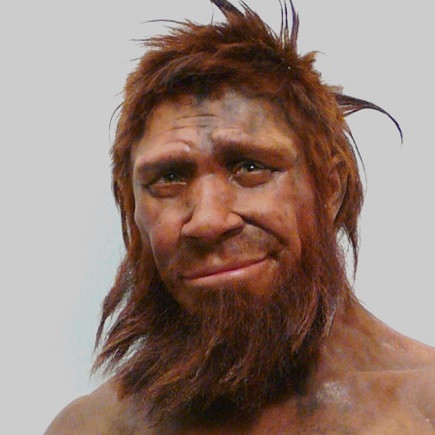
How much Neanderthal DNA is in modern humans?
It’s hard to believe we have anything in common with a species that lived hundreds and thousands of years ago, but you may be surprised to learn that many humans have Neanderthal DNA within their genome. In 2006, a group of scientists launched the Neanderthal genome project, reporting a high coverage genome for the first time in December 2013.
Today, scientists are still investigating how similar Neanderthal DNA is to our own, while some DNA testing companies are allowing customers to examine the personal connections they might have to their ancient ancestors. Here, we outline exactly how modern human DNA has been influenced by the Neanderthals.
Who were the Neanderthals?
Neanderthals were a distinct species of early human, who lived across Europe and southwest and central Asia from about 400,000 to 40,000 years ago. In the meantime, our species— Homo sapiens—were evolving in Africa.
The word Neanderthal means ‘human from the Neander Valley’, and scientists have been able to learn more about this species than any other extinct humans, thanks to the thousands of contemporary artifacts and fossils that have been uncovered. Neanderthals are typically physically characterized by their large noses, short and stocky bodies, and a strong double-arched brow ridge. And though we tend to envision them as ‘cavemen’, they were actually very intelligent, with a brain size larger than the modern average.
It’s unclear exactly why Neanderthals became extinct, but one popular theory pins this on the arrival of early modern humans in Europe. Many scientists believe that Neanderthals struggled to survive amidst the competition for resources against our species. However, it has also been suggested that the Neanderthal lineage simply disappeared as a result of being absorbed into the larger human population.
Do all humans have Neanderthal DNA?
Neanderthal DNA is found in many modern humans, as the two species encountered each other throughout Eurasia, and interbred. This introduced a small amount of Neanderthal DNA into the modern human gene pool, which is why plenty of people alive today have some Neanderthal DNA.
Scientists now estimate that people of European, Asian, and Australasian lineage have approximately 2% Neanderthal DNA. However, those of African origin have no Neanderthal DNA, as their ancestors did not migrate through Europe and therefore never encountered, or interbred with, the species.
What can we learn from a Neanderthal DNA test?
Many DNA home testing companies are able to estimate how much Neanderthal DNA you have. For example, 23andMe tests for Neanderthal DNA at over 1,400 markers scattered across the human genome. Each of these markers contains a genetic variant that evolved in Neanderthals, and entered the modern human lineage after the species interbred.
23andMe has identified four Neanderthal variants that confer traits: whether hair is straight or curly, height, back hair, and—surprisingly—whether you sneeze after eating dark chocolate. Even so, these associations are still considered scientifically tenuous. Neanderthal DNA would only affect height by about 0.1 inch as this trait is determined by over 300 genes.
Though these characteristics cannot currently be estimated through Neanderthal DNA tests, staff at the Smithsonian Institute’s Human Origins program say that Neanderthal markers can reveal a person’s propensity for blood clotting and addiction to smoking. Even though Neanderthals didn’t smoke, researchers claim that some genetic markers had a completely different function in Neanderthals, or are literally next to another gene that has said function within the genome. Additional research suggests Neanderthal DNA could also affect our immune systems, sleeping patterns, and general mood.
It’s unclear how much Neanderthal genetic material actually impacts the body, but Neanderthal DNA tests still provide a thrill by illustrating how we are connected to an extinct species from over 40,000 years ago. Among other things, 23andMe’s test outlines the number of Neanderthal variants in a genome, how this compares to others in the database, and from which parents customers inherited each variant. Therefore, for most interested customers, the 2% of Neanderthal DNA is still worth investigating.
